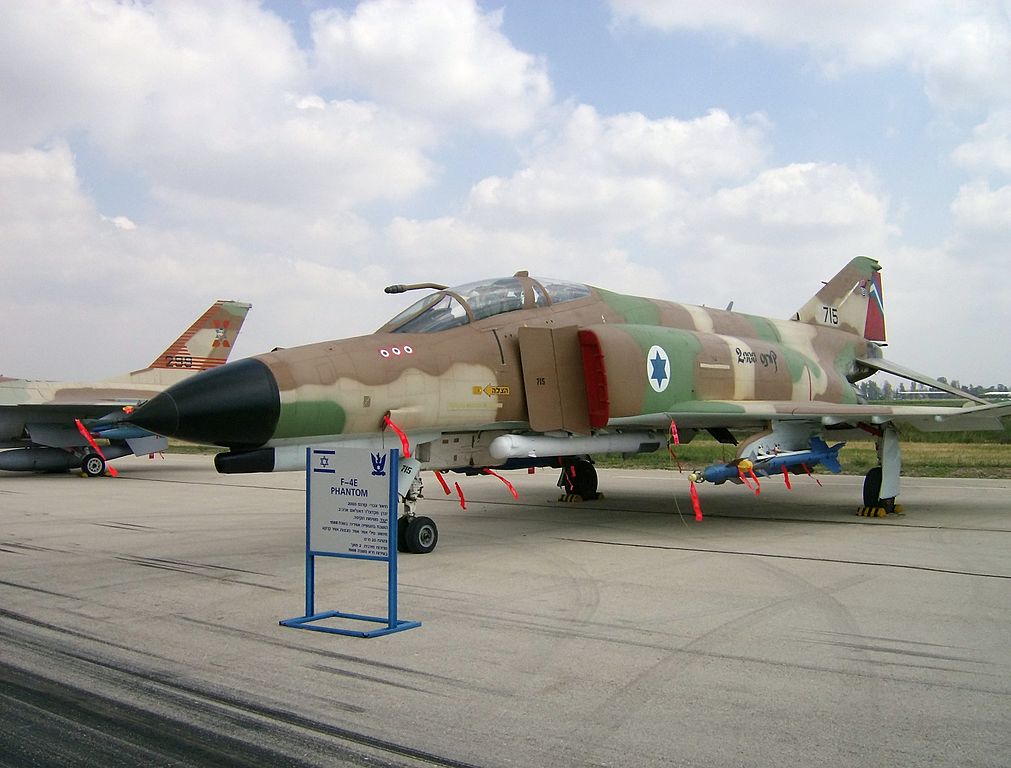The most concerning MiG-25 reconnaissance trip had place on October 10, 1971, when two Foxbats flew at Mach 2.5 and extremely high altitudes parallel to the Israeli and Sinai Mediterranean coastlines, 17 miles offshore. There was no success in trying to stop the intruders
It is obvious why the Israeli Air Force (IAF) fought so hard to acquire the F-4 and relied on it so heavily in the late 1960s. The large jet outperformed everything they had used up until that point in terms of range, payload, and bombing accuracy. In fact, the Phantom swiftly established itself as the IAF’s main pillar after its 1969 acquisition. By October 1973, the IAF had credited the Phantom with 11 kills.

The Phantom, however, would never be able to capture some enemies. The Soviet Union started conducting high-altitude surveillance flights over Israel in 1970 using the Yak-26 Mandrake aircraft. This aircraft proved to be out of reach. Beginning in March 1971, Soviet pilots flew MiG-25R (X-500) photo-recce missions out of Egypt at speeds up to Mach 3.2 and altitudes of 73,000 feet (22,250 meters). In October 1971, it’s possible that the first “Foxbat-B” flights took place, maybe into the Sinai and parallel to the Canal.
The most concerning reconnaissance flight took place on October 10 when two of the jets flew parallel to the Israeli and Sinai Mediterranean coastline, 17 miles (27 km) offshore, at Mach 2.5 and extreme altitude, according to Bill Norton’s book Air War On The Edge: A History of the Israel Air Force and its aircraft since 1947. The intercept was unsuccessfully stopped. At the time of the second MiG-25 intrusion (all flights with pairs of jets) over the Sinai on Nov. 6, the Israelis had a strategy for dealing with it, despite initially only being able to respond with their own reconnaissance overflights and booming Cairo.

In order to increase performance, they had removed all unnecessary gear from numerous Phantoms, and their sole weapons were AIM-7 Sparrows. It was believed that by sitting alert, the planes could be launched with enough time to do a zoom climb from Mach 1.4 to 44,000ft (13,410m) and launch their missiles with a high nose-up attitude and leading the target. The proximity fuse of the missiles and the fire control computer of the Phantom, however, were not designed for such combat conditions, and the warheads detonated too late.
Because of this failure and US experimentation in response to the ‘Foxbat’ threat, Israel received the more sophisticated AIM-7F in 1974. On March 10 and May 16 of the same year, 1972, there were two further flights over the Sinai. These flights were highly concerning for the West, not because of any potential intelligence they could have gathered, but rather because of what they revealed about the MiG-25’s capabilities. As President Sadat ordered the Soviets out of his nation in July, Israel’s frustration with having its facilities photographed without repercussions came to an end.
The Soviets once more sent “Foxbat-Bs” to Egypt at the end of October 1973 to keep an eye on the locations and movements of the Israeli army. They were withdrawn after almost two years and appeared to be limited to flying to the west of the Canal. There are rumors that the EAF temporarily used a MiG-25R in 1974 and conducted one bold flight over Israel before the Soviets insisted that the aircraft be immediately returned. Then a “Foxbat” detachment showed up in Syria. Although flights over the occupied Golan Heights were likely made, particularly during the difficult time after the 1973 war, there have been no confirmed reports of efforts to penetrate Israeli airspace.
Also, the Americans flew U-2 over Israel in the 1960s and maybe later to monitor the Dimona nuclear plant and gather other intelligence. This aircraft was also uncatchable by IAF Phantoms and Mirages.
It has also been asserted that on October 13, 1973, during a sensitive time, IAF F-4s attempted to intercept and destroy a USAF SR-71 flying a reconnaissance mission over Israel or the Canal region (there were possibly two Blackbird intrusions). If this is the case, the SR-71 was unaware of the attempt to intercept, and the Israelis stood the risk of losing the information that was quickly relayed to them. The Blackbird easily climbed and sped away from the Israeli jets in any case. An SR-71 intercept attempt by the Egyptians was unsuccessful. Given that the USSR was flying MiG-25s above the canal, it’s possible that the goal was to deter all such sorties.
Only the F-15’s introduction to the IAF in 1976 put an end to intrusive overflights by both American and Soviet aircraft. On July 29, 1981, a Syrian MiG-25 was reportedly shot down over northern Israel by an F-4 escorted by F-15s.
Photo by U.S. Air Force, Oren Rozen, Itayba on he.wikipedia.org and Dmitriy Pichugin via Wikipedia

